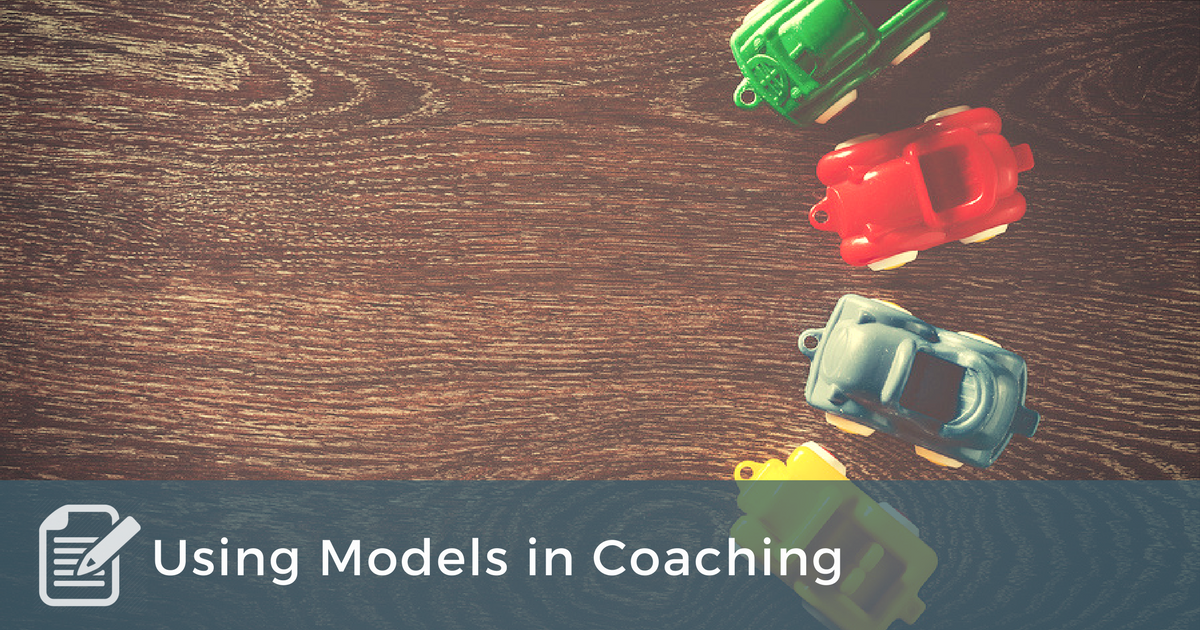 Recently Brian Miller and I did a podcast in which we talked about coaching models. It was a good conversation. Afterwards, as I reflected on the conversation, I realized that something needs to be written down on this, so I figure a blog post is a great place to address some basic questions about coaching models.
Recently Brian Miller and I did a podcast in which we talked about coaching models. It was a good conversation. Afterwards, as I reflected on the conversation, I realized that something needs to be written down on this, so I figure a blog post is a great place to address some basic questions about coaching models.
First, what do we mean by a coaching model? Any kind of model is a representation of reality. A model train represents a real train. A map of Boston represents the city and its streets and features. A model helps you better understand and navigate the real thing. This is exactly the way a coaching model works. A coaching model represents some real truth, but represents it in a way that makes engaging that real truth easier.
Second, what kinds of models are there? Not all models are created in the same way or for the same type of purpose. In my mind, there are basically three types of coaching models:
- Conversation Models. This type of model represents an entire coaching conversation, from beginning to end. For example, the GROW model represents an effective coaching conversation by describing it as flowing through four stages: Goals, Reality, Options, and What (along with Who, When, and the Will to do it). The model shapes the way we have the conversation unfolds and can help the coach and client make sure they are on the same page. Other conversation models include the Hourglass Model, and Stages of a Coaching Conversation.
- Awareness Models. This kind of model represents a truth that might help the client better understand and address the issue on which he is being coached. Think of these as “lessons” that the client can apply to his situation. For example, the Strengths vs. Skills model represents the truth that what we can do (skills) is not always fully supported by who we are (strengths). Once we share this model, the client can apply this lesson in her own life in whatever way she thinks best. Coaches don’t use awareness models to teach the client what to do, but instead the coach draws out from the client how she wants to apply the model.
- Behind-the-scenes Models. While the other two types of models can (and often are) shared with the client, this type of model isn’t. This type of model informs the way the coach believes the world works and therefore shapes the coach’s questions and interaction with the client. For example, I am a big fan of the Jungian personality model that is the framework for the Myers-Briggs Type Indicator (MBTI). That model of personality informs a lot of how I coach, but I rarely (if ever) make this explicit to the client. Similarly, I hold a model that describes the relationship between human being and action as follows: my being (who I am in terms of my values, assumptions and character) determines my beliefs (my interior thoughts and feelings), which dictate my behaviors (my actions and habits), which in turn helps create the results I experience. As I strive to coach the person, and not just their problem, I use this model to explore beneath the surface behaviors to the interior thoughts and feelings, and sometimes to the even deeper aspects of the client’s being. While this is a powerful model that supports my coaching, I very rarely share the model with those I coach.
Third, how do coaches discover and keep track of coaching models? I’m not sure there is an easy answer to this question. Truth is, you’ll probably have to find your own way to learn and leverage various models. But I would say that every coach needs to pay attention. Be on the lookout for lessons, frameworks, and truths that might be applicable to your particular coaching clients. BTW, this is one of the reasons having a coaching niche is so important. If you coach a lot of leaders, you’ll want to get to know some leadership models. If you coach married couples, it will be helpful to learn some relationship models. If you work with small business owners, you’ll likely want to have access to models on time management, prioritization, and decision-making. Where should you look for such models? Try books and journals related to your clientele. Also, many assessments provide helpful models even if you never use the assessment itself.
Remember, models represent reality, but they are not reality. A good model describes some aspect of reality so well that it brings greater clarity, but even the best models fail to describe everything about reality. Don’t be so focused on a model that you miss the reality of the client whom you’re coaching.



1 thought on “Using Models In Coaching”
Hi Chad! Thanks again for sharing on this topic. Really looking forward to printing and using the GROW and Awareness models with future clients this 2018.
Thanks CAM!